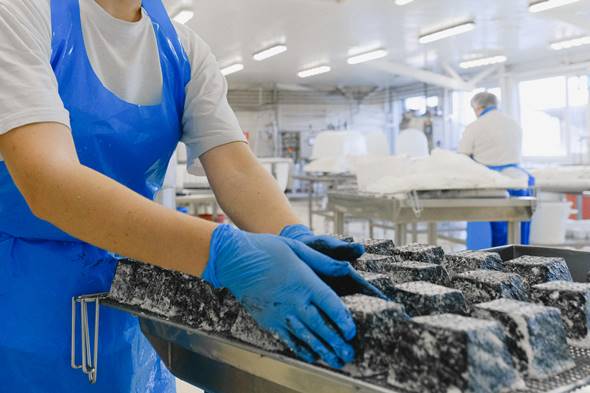
In the quest to ensure consumers’ safety and well-being, the significance of maintaining high food hygiene standards cannot be overstated. Whether it’s through safe food handling procedures, stringent food hygiene regulations, or ensuring cleanliness in food preparation, the methods by which nations safeguard their food supply are crucial.
This article examines how two leading entities—the United States and Europe—approach the complex issue of food hygiene. By comparing their strategies, we can glean insights into the varied approaches to protecting consumers, promoting health, and ensuring the safety of food from farm to fork.
Regulatory Agencies and Oversight
When it comes to food hygiene, the foundational element is the establishment of regulatory bodies tasked with oversight and enforcement.
The Food and Drug Administration (FDA) and the United States Department of Agriculture (USDA) lead the charge in the United States. The FDA oversees most of the food supply, including seafood, processed foods, and produce, while the USDA handles meat, poultry, and egg products.
Across the pond, the European Food Safety Authority (EFSA) offers scientific advice to support legislation across the European Union (EU), with member states handling regulation and enforcement at the national level.
These agencies set and implement food hygiene guidelines, ensuring that food producers adhere to the highest cleanliness and safety standards in food preparation. They aim to prevent food contamination and foodborne illnesses through rigorous inspection and regulation, safeguarding public health.
The differences in the operational frameworks of these agencies underscore the varied approaches to ensuring food hygiene. While the FDA and USDA work within a system that balances the interests of consumers and producers, the EFSA’s role as an advisory body influences the EU’s legislative process, ensuring that food safety regulations are grounded in scientific evidence.
This collaborative approach between scientific advisors and national regulators within the EU contrasts with the direct regulatory actions taken by the US agencies. Both systems, however, share a common goal: to enhance food preparation’s cleanliness and protect consumers from food-related risks.
Focus on Prevention vs. Reaction
The focus on prevention versus reaction is a critical difference in approach between the US and Europe. The US Food Safety Modernization Act (FSMA) represents a significant shift towards preventing food safety issues before they occur rather than responding to outbreaks after the fact. This proactive approach is mirrored in the EU’s comprehensive farm-to-fork strategy, which emphasizes the prevention of contamination at every step of the food supply chain.
Both regions recognize that safe food handling procedures involve more than reacting to problems; they also involve preventing them from occurring in the first place. By focusing on food hygiene regulations from the outset, they aim to minimize risks and ensure that food is safe to eat.
Labeling and Additives
Labeling practices and the use of additives in food products reveal another aspect of food hygiene. The US mandates specific labeling requirements, including nutritional information and allergen warnings, but is more permissive regarding food additives, allowing substances that may be banned or restricted in Europe. Conversely, the EU has stricter labeling requirements, including the mandatory labeling of genetically modified organisms (GMOs), and adopts a more precautionary stance on food additives.
This divergence highlights the importance of transparency and consumer information in food hygiene. Both regions aim to promote safer food choices and cleaner food preparation practices by informing consumers about what’s in their food.
Pesticide and Chemical Regulations
Pesticides and chemicals are necessary for modern agriculture, but their use is tightly regulated to ensure food safety. The US Environmental Protection Agency (EPA) sets tolerance levels for pesticide residues, deemed safe but often higher than those allowed in the EU. Europe’s stricter stance on chemical use in agriculture, emphasizing lower pesticide residue levels and a precautionary approach to new substances, reflects a different balance between agricultural productivity and food hygiene.
The focus on minimizing chemical residues in food products is a key aspect of ensuring cleanliness in food preparation and safeguarding consumer health, with both regions striving to find the right balance.
The GMO Debate
The acceptance and regulation of GMOs represent a significant divide between the US and Europe. In the US, GMOs are widely used and regulated by multiple agencies, without mandatory labeling, unless there’s a significant difference in nutritional content or potential allergens. In contrast, the EU requires strict labeling and traceability of GMOs, with a stringent approval process reflecting a more cautious approach to biotechnology in food production.
This debate touches on the core of food hygiene—ensuring that food is free from contaminants and safely produced using technologies that do not compromise consumer health.
Nurture Global Food Safety
Food hygiene is not just the responsibility of regulatory agencies; it’s a shared concern that requires informed choices by consumers and commitment by food producers. By understanding the differences and similarities in food hygiene standards between the US and Europe, consumers can better appreciate the efforts made to ensure the food they eat is safe, clean, and prepared with their health in mind.
Both the US and Europe have robust systems designed to protect the food supply, but they also rely on consumers being informed, vigilant, and engaged. Whether it’s through reading labels carefully, being aware of food hygiene guidelines, or advocating for cleaner food preparation practices, every individual has a role to play in promoting food safety.


